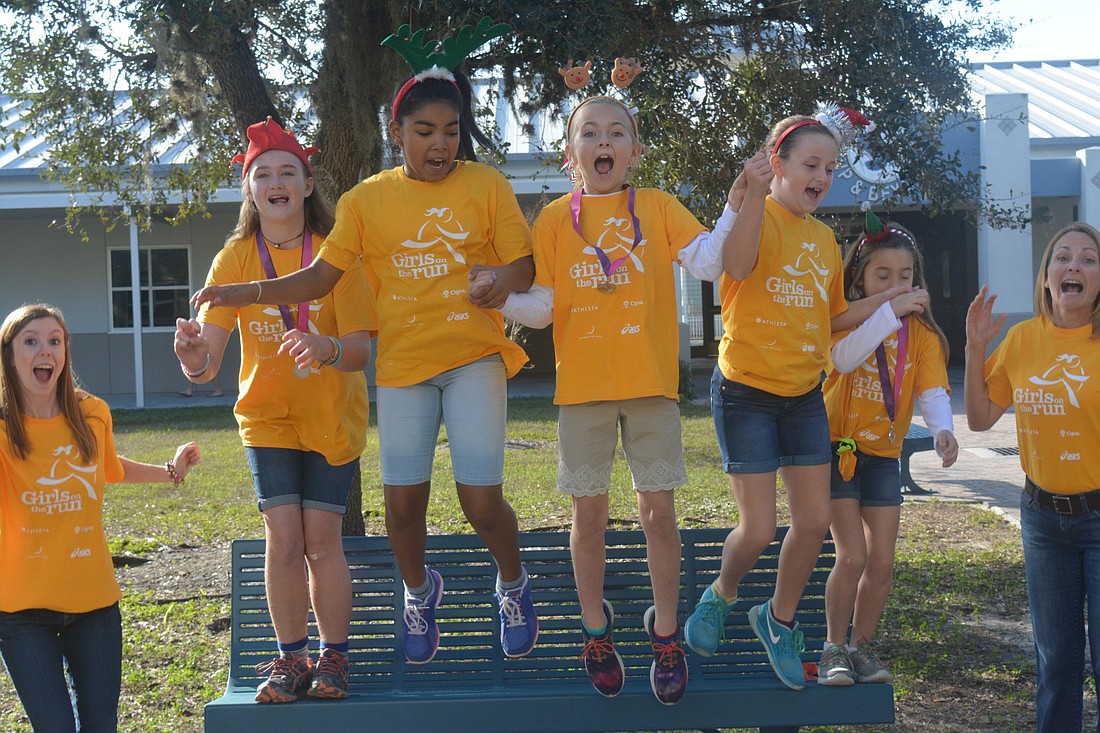- November 24, 2024
-
-
Loading

Loading

In my time working at the Observer and learning the craft at the University of Missouri, I’ve never interviewed a happier set of people than the members, teachers and director of Girls on the Run.
I don’t mean happy to be interviewed, though they were that, too. They want their program to spread like wildfire across the country, so every young girl can get involved.
I mean that they were all happy — happy to be alive, to be able to bond with their fellow runners, to be themselves.
Girls on the Run is an after-school program that teaches young girls life skills through running, including how to be healthy, joyful and confident, according to Laura Moore. She’s the director of Girls on the Run Tampa Bay, which oversees the program in Sarasota schools.
The girls set running goals for themselves throughout the fall semester, making sure they are manageable. At the end of the semester, there’s a celebratory Girls on the Run 5K presented by UnitedHealthcare that brings together girls from across the Tampa Bay area. Moore called the program everything young girls need to thrive "in a beautiful, sparkly package."
“You have to accomplish something from within in order to have true confidence,” Moore said. “People can give you compliments, but one negative comment can ruin that. Once these girls cross the finish line, though, no one can take that away from them. That is theirs forever.”
Sitting down at a picnic table in Phillippi Shores Elementary School’s courtyard, I was greeted by the shining faces of third-grader Rylee Roads, fourth-graders Ciara Perez, Carley Ramsden and Collier Moser, and fifth-grader Reese Nippert, members of the school’s Girls on the Run chapter. Their coaches, second-grade teacher Kelly Collins and fourth-grade teacher Katie Stults, sat beside them beaming. There were 15 total girls in the program at Phillippi, but not all of them were available to talk.
When I asked the girls what they learn at Girls on the Run, five hands shot to the sky.
“We learn empathy!” Moser said.
“We learn about Star Power,” Roads added.
I didn’t know what that meant, but Roads was excited to explain. “If you’re sad, you can try making yourself happy by making someone else happy. Like, if you’re not playing with anyone and someone asks if you’re OK and asks you to play with them, they are activating your Star Power by making good things happen for you.”
Perez learned that she is able to accomplish anything she sets out to do. She set increasing lap goals for herself, eventually trying to run 12 laps, or 2 miles, and succeeding.
The girls get special nicknames during the program that show off their personality traits. These nicknames change as the program goes on, and the girls learn more about themselves. Perez started as “Confident Ciara,” but changed hers to “Creative Ciara” as time passed. There is also “Crazy Carley” and “Runnin’, Rockin’ Rylee,” among others.
What Girl on the Run means to Nippert is different than the others. In May, she was on vacation at the beach when she stepped into a boat. Nothing out of the ordinary. Except when she put pressure on her foot, she lost control of her leg. She had suffered Reflex Sympathetic Dystrophy Syndrome, which is severe, burning pain from nerve damage. Nippert lost the ability to walk, and didn’t regain it until August through physical therapy. When Girls on the Run started up, she still couldn’t run.
Brooke Collins, Kelly Collins’ daughter who attends Riverview High School, coached with the group as well. She slowly helped Nippert learn to run again, with support from everyone.
“All the other girls would cheer me on,” Nippert said. “They were like, ‘Go Reese, go!’ It was so fun.”
Nippert was able to compete in the 5K on Dec. 10 in St. Petersburg.
Along with being a sphere of positivity, the program is a place where girls are allowed to be girls.
“Sometimes when boys are around, you kind of feel weird to be yourself,” Nippert said. “But when you’re around a bunch of girls, it makes you feel normal.”
“And boys always say stuff like, ‘Ew, you throw like a girl,’ but honestly, girls can be 10 times stronger than boys,” Ramsden added.
“We don’t have to let boys tell us what to do,” Roads said.
Moser said boys aren’t very positive when playing sports, and she likes to stay positive, which is why she loves this group so much.
I have to agree, Collier. There should absolutely be more positivity in youth sports, on both the boys and girls side of things. For elementary-aged athletes, their only worry should be having fun with their friends, developing social and life skills and generally feeling good about what they have accomplished. There’s a time and a place for worrying about winning, but it’s not at this age.
I admire everyone involved with Girls on the Run. My niece participated in it before she moved up to middle school this year and said she loved it, but I never realized what a fantastic empowerment tool it is until now.
You go, girls.